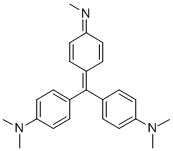BRONZE
Synonym(s):Bronze;CU096010;Sn5Cu84
- CAS NO.:158113-12-3
- Empirical Formula: CuSn
- Molecular Weight: 182.26
- MDL number: MFCD00198187
- SAFETY DATA SHEET (SDS)
- Update Date: 2023-04-23 13:52:06

What is BRONZE?
The Uses of BRONZE
Bronze is one of the several components needed for the preparation of honing oilstone which is used in processing stainless steel; Also, it has great potential as photocatalyst or as anode material in Li-ion batteries.
Definition
Any of a group of copper-tin alloys
usually containing 0.5–10% of tin.
They are generally harder, stronger in compression,
and more corrosion resistant
than brass. Zinc is often added, as in gunmetal
(2–4% zinc), to increase strength
and corrosion-resistance; bronze coins
often contain more zinc (2.5%) than tin
(0.5%). The presence of lead improves its
machining qualities.
Some copper-rich alloys containing no
tin are also called bronzes. Aluminum
bronzes, for example, with up to 10% aluminum,
are strong, resistant to corrosion
and wear, and can be worked cold or hot;
silicon bronzes, with 1–5% silicon, have
high corrosion-resistance; beryllium
bronzes, with about 2% beryllium, are
very hard and strong.
Definition
bronze: Any of a group of alloys ofcopper and tin, sometimes with leadand zinc present. The amount of tinvaries from 1% to 30%. The alloy ishard and easily cast and extensivelyused in bearings, valves, and othermachine parts. Various improvedbronzes are produced by addingother elements; for instance, phosphorbronzes contain up to 1% phosphorus.In addition certain alloys ofcopper and metals other than tin arecalled bronzes – aluminium bronze isa mixture of copper and aluminium.Other special bronzes include bellmetal, gun metal, and berylliumbronze.
Industrial uses
The term bronze is generally applied to anycopper alloy that has as the principal alloyingelement a metal other than zinc or nickel. Originallythe term was used to identify copper–tinalloys that had tin as the only, or principal,alloying element. Some brasses are calledbronzes because of their color, or because theycontain some tin. Most commercial copper–tinbronzes are now modified with zinc, lead, silver,or other elements.
Bronze is used in bearings, bushings, gears,valves, and other fittings both for water andsteam. Tin bronze, including statuary bronze,contains 2–20% tin; bell metal 15–25%; andspeculum metal up to 33%. Gun metal contains8–10% tin plus 2–4% zinc.
The properties of bronze depend on itscomposition and working. Phosphor bronze is tin bronze hardened and strengthened withtraces of phosphorus; it is used for fine tubing,wire springs, and machine parts. Lead bronzemay contain up to 30% lead; it is used for castparts such as low-pressure valves and fittings.Maganese bronze with 0.5 to 5% manganeseplus other metals, but often no tin, has highstrength. Aluminum bronze also contains no tin;its mechanical properties are superior to thoseof tin bronze, with up to 3% silicon, casts well,and can be worked hot or cold by rolling, forging,and similar methods. Beryllium bronze(also called beryllium copper) has about 2%beryllium and no tin. The alloy is hard andstrong and can be further hardened andstrengthened by precipitation hardening; it isone of the few copper alloys that responds toheat treatment, approaching three times thestrength of structural steel.
Properties of BRONZE
| form | spherical powder |
| color | Bronze |
| Exposure limits | ACGIH: TWA 0.2 mg/m3 OSHA: TWA 0.1 mg/m3; TWA 1 mg/m3 NIOSH: IDLH 100 mg/m3; TWA 1 mg/m3; TWA 0.1 mg/m3 |
Safety information for BRONZE
| Signal word | Warning |
| Pictogram(s) |
 Environment GHS09 |
| GHS Hazard Statements |
H410:Hazardous to the aquatic environment, long-term hazard |
| Precautionary Statement Codes |
P273:Avoid release to the environment. P391:Collect spillage. Hazardous to the aquatic environment P501:Dispose of contents/container to..… |
Computed Descriptors for BRONZE
BRONZE manufacturer
New Products
(S)-3-Aminobutanenitrile hydrochloride 4-Methylphenylacetic acid N-Boc-D-alaninol N-BOC-D/L-ALANINOL Tert-butyl bis(2-chloroethyl)carbamate 3-Morpholino-1-(4-nitrophenyl)-5,6-dihydropyridin- 2(1H)-one Furan-2,5-Dicarboxylic Acid Tropic acid 1-Bromo-3,5-Di-Tert-Butylbenzene S-2-CHLORO PROPIONIC ACID ETHYL ISOCYANOACETATE 2-Bromo-1,3-Bis(Dimethylamino)Trimethinium Hexafluorophosphate 4-IODO BENZOIC ACID 3-NITRO-2-METHYL ANILINE 1-(2,4-DICHLOROPHENYL) ETHANAMINE (2-Hydroxyphenyl)acetonitrile 4-Bromopyrazole 2-(Cyanocyclohexyl)acetic acid 4-methoxy-3,5-dinitropyridine 1-(4-(aminomethyl)benzyl)urea hydrochloride 2-aminopropyl benzoate hydrochloride diethyl 2-(2-((tertbutoxycarbonyl)amino) ethyl)malonate tert-butyl 4- (ureidomethyl)benzylcarbamate Ethyl-2-chloro((4-methoxyphenyl)hydrazono)acetateRelated products of tetrahydrofuran








You may like
-
 Bronze 98%View Details
Bronze 98%View Details -
 Tin copper alloy nanopowder (92% Sn, 8% Cu) CAS 158113-12-3View Details
Tin copper alloy nanopowder (92% Sn, 8% Cu) CAS 158113-12-3View Details
158113-12-3 -
 Tin copper alloy nanopowder (10% Sn, 90% Cu) CAS 158113-12-3View Details
Tin copper alloy nanopowder (10% Sn, 90% Cu) CAS 158113-12-3View Details
158113-12-3 -
 Bronze CASView Details
Bronze CASView Details -
 Bronze CASView Details
Bronze CASView Details -
 Bronze CASView Details
Bronze CASView Details -
 Bronze CASView Details
Bronze CASView Details -
 Bronze CASView Details
Bronze CASView Details